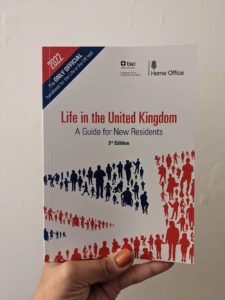Before we had a flat, we tried to open a bank account. Some websites suggested that they had special accounts for foreign nationals, or people who didn’t have proof of address yet. Those website are all incorrect.
Seriously.
All of them.
Lloyd’s, for example, still comes up in internet searches as having an account specifically made for folks who have just moved to the UK. According to their staff, however, they discontinued that service in February 2017.
We tried Lloyd’s first because of their website, then walked to Barclay’s. A kind person overheard our frustration and said that Metro Bank was known for being a bit more lenient. So we walked over and they said we needed that address, but that once we had it then we would be all set. Sweet.
Week 1: Three bank visits
Once we had our lease we went back to Metro, but they said we needed an additional proof of address. I called and they said we needed a letter from my husband’s employer. I asked what the letter needed to include, and unfortunately they gave me incorrect information.
This meant that when we went in the next time they wouldn’t open the account, and asked for another letter with additional information. They also said that for a joint account we both had to separately have two forms of proof of address, which was a challenge for me since I didn’t yet have an employer. Gas, electric, or water bills or council tax bills would have worked, but our flat is newly renovated and the system not updated, so we don’t have those bills yet.
Week 2: One bank visit, four total
We both had Monese accounts, so we printed out statements from them, and then brought in our tenancy agreement and the letter from my husband’s employer. We got to the end of the process when the bank said that our tenancy agreement and such didn’t match the official Royal Mail address list, and so we couldn’t open an account yet.
We live in our flat, so we were surprised to see that for the banking system, it didn’t exist.
Week 3: One bank visit, five total
Because we were living in a newly renovated flat, the Royal Mail address system hadn’t been fully updated. This was a problem. Our landlord kindly agreed to send a revised tenancy agreement that matched the Royal Mail system. Home free, right?
Nope. We brought all the same info back to Metro (including the updated employer letter and Monese statements to match), and were told that because our landlords were private, this was a problem. Note that this issue was not brought up in any of the other four visits.
I’m still pissed thinking about it.
So I told them that we wanted them to remove all information they had on us from their system and that we’d be finding another bank. They were surprised. Oh well.
Lesson: Don’t use Metro Bank, and do ask lots of questions.
The next morning we went to Lloyd’s again, and they said they wouldn’t accept the tenancy agreement either. We then went to HSBC, who said that they didn’t have an appointments, but since we were from the US, they should be able to use our US address, open that account, and then transfer over. SCORE!
We took a bus to a larger branch where we were told that no, since we now lived here, that wasn’t an option. BUT. They said that all we needed was the letter from my husband’s employer to open a joint account. It’d be proof for him, and even though I wouldn’t have independent proof, I could still be on a joint account with him.
Week 4: Four bank visits, nine total
Monday I called HSBC and was able to get us an appoint for Thursday. We went in and THEY OPENED OUR BANK ACCOUNT.
Total: Five weeks, 10 visits to banks.
Lesson: Lloyd’s has bad information on their website, Metro always asks for more information and will waste your time. Not sure about Barclay’s or Nationwide. But HSBC worked for us.


